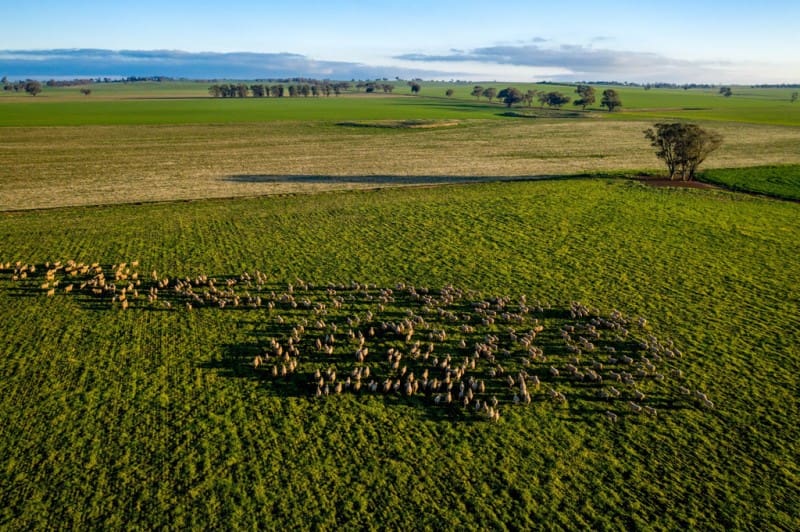
Pine Grove at Sebastopol on the south-west slopes of NSW sold privately in September 2020 to set a district record of $11,856/ha. Photo: Miller and James, Temora
AN ORDINARY 2022 coupled with rising interest rates and a higher cost of production are impacting cropping property sales in southern New South Wales.
Herron Todd White NSW and Australian Capital Territory valuer Andrew Garnsey has noticed a slowing of demand, particularly in the south-west cropping belt.
“Quality properties are still sought after, with well-developed turnkey holdings transacting well across the commodities,” Mr Garnsey said.
“However, there may be two or three potential buyers competing today, not five or six.”
Mr Garnsey said rising interest rates were now impacting heavily on purchasing decisions.
“Farmers are not rushing out to buy another farm as they concentrate on getting this year’s crop in the ground and those who may have recently made that once in a 30-year purchase are now trying to consolidate.”
Mr Garnsey said interest rate increases were having an impact.
“Recently, I spoke to a grower with an interest bill that has risen from $20,000 to $60,000 a month over a 12 month period, on top of an ordinary harvest in 2022 and receipt of the previous year’s tax bill.”
Mr Garnsey said the recent rain-affected harvest has also had an impact on cash flow, particularly in the sub-500mm rainfall areas west of Wagga Wagga.
“The dryland cropping segment appears to be entering a consolidation phase following a wet harvest in 2022, high prices for cropping inputs, softening of grain and oilseed prices and the higher cost of machinery.”
“Some properties have passed in at auction, while others are selling at levels 10 to 15 percent lower than per hectare rates achieved in early to mid-2022, when interest rates were still on hold and land values experienced once-in-a-generation gains.”
Values ease
Mr Garnsey said in the past two years, properties in grain-growing areas within 40km west and north of Wagga were often achieving $11,115-$12,350/ha.
“Those prices appear to have dropped back closer to $4000/ac ($9880/ha) based on a few recent sales. This is particularly evident if a property needs money spent on it to restore productivity.”
Mr Garnsey said buyers were being selective.
“Purchasers are now running a strict ruler over potential acquisitions. In particular, those properties that may need expenditure upfront to restore productivity, such as weed control, lime applications and the reconfiguration of fence lines.”
Mr Garnsey believes property prices are plateauing.
“Over the last two years, property prices rose to levels that would have been normally witnessed over a 10 year period. Demand appears to be slowing down as farmers pay interest on high capital values from their recent purchases or factor in increased costs to service new debt.”
Mr Garnsey reports southern NSW has had an excellent start to the season.
“The region is experiencing its third autumn break in a row and the rain stopped at the right time – all good pointers for getting a crop in the ground. It just hasn’t been an ideal time of year to sell a property.”
Mr Garnsey said some larger southern growers looking to purchase country have turned their attention to the traditional cropping areas of northern NSW.
“This region is considered better value because it hasn’t experienced the same southern land gains and additionally, it offers summer cropping opportunities and scale.”
Traditionally, cropping operations around places like Gunnedah and Narrabri have traded at similar price levels to the south-west slopes typically at price levels around $9880-$11,115/ha.
Mr Garnsey said over the past two years, there has been a dramatic jump in the south, with land values nearly doubling in price, while the north has not experienced anywhere near the same gains.
Grain Central: Get our free news straight to your inbox – Click here
